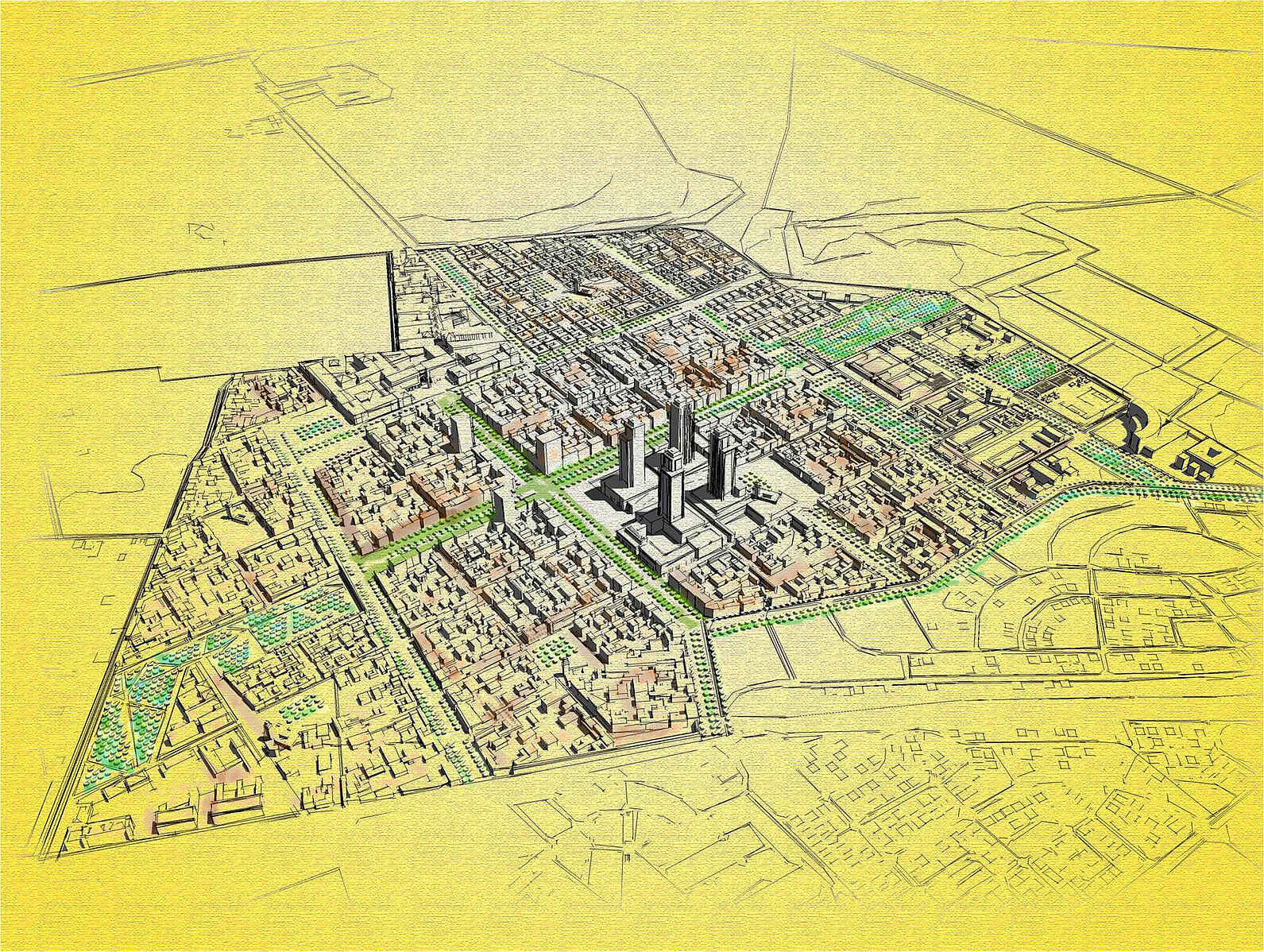A tale of two cities- Town planning after the pandemic
Crowded office spaces and carefree socialising seem like a distant memory for many of us. In fact, just living with a little less of the existential dread most of us are experiencing right now would be nice. As we pass a year of living with COVID-19 restrictions, globally, cases do seem to be falling (Feb 2021) and as the rollout of a number of effective vaccines continues, there does seem to be a light at the end of the tunnel. With that news, restrictions may start to be lifted, but that does not mean returning to the lives we all left last year.
Over the past few centuries, societies have moved out of rural areas and into cities. Before the COVID-19 pandemic, the United Nations projected that by the year 2050, 68% of the population on Earth would be based in urban regions. The high density of people, and how easily those within it can communicate with each other is what makes cities so appealing for some, but it also creates the perfect environment for a virus to spread. So, in light of what we have all experienced, what will it be like to live in a city post-covid?

Well, cities are not going anywhere, but many of us have been told that we should stay at home as much as possible, and avoid meeting with others outside of our protective bubbles. For a lot of us, that has meant working from home, leaving the hustle and bustle of the crowded office, to be replaced by online meetings and zoom calls. However, not all jobs can accommodate these new styles of working, such as jobs in the service and cultural industries, but with the lack of footfall, many of these businesses are on their knees, struggling to weather the storm of COVID-19.
As we start to reopen our cities, town planners will have to refocus their attention on promoting public health, through the increased use of SMART technologies, promoting new ways of connecting people, and opening up public spaces to avoid overcrowding. Homeworking will most likely remain for some, with surveys suggesting that 60% of businesses will keep some form of home working as an option.
However, it is more likely that a hybrid approach will be implemented, with the death of the 9-5 for some. Instead, more flexible working hours or staggered start times will probably be introduced, with online booking for desk space and conference rooms, to avoid too many people in an office at once. Increased connectivity and smart technologies will eventually allow people to manage their time and space much more easily, either at work or in the wider world. This technology will streamline the comings and goings of people, but will most likely also be implemented as some form of contact tracing, although this may depend on local sensitivity to data protection.

Social activities will be increasingly encouraged to take place outside whenever possible to help ensure social distancing can be maintained, and where that is not possible there will probably be strict measures to control the number of people allowed on premises at any one time. Brick and mortar retail outlets have been hit hard by the lack of physical customers, and it seems inevitable that some if not all will have to incorporate some form of online shopping/click and collect purchasing options. However a lot of these changes and the integration of smart technologies will be costly to implement, and after a turbulent year, many businesses will not be able to recreate their lost capital or be able to front the cost of these changes, and will, unfortunately, have to shut the doors for good.
There are also a number of wider infrastructure ideas that some town planners may try to develop. These include the improvement of public roads and paths to encourage more people to walk and cycle around, reducing the numbers using public transport. Along with this, the idea of creating 15-minute cities, where everything you need could be a short walk away from your front door, could promote the idea of supporting your local community, while also limiting the number of people you may see in a single outing.
These are not small changes; they are massive infrastructure upheavals that will take years to plan and implement fully. It will not be an easy task, but it would not be the first time that cities have had to adapt to protect their citizens from pandemics. London built a whole new sewage system after the deaths from the bubonic plague, Paris and New York created more green, open space to help keep their air clean during times of great health crises, so it is possible. Town planners and industry leaders will also have to accommodate the increased apprehension of many people to re-enter these areas, and what is expected from businesses for people to feel comfortable once again, be that online menu at restaurants, contactless lift controls, or just more visible hand wash stations.
However, this pandemic has highlighted the wealth divide in all social strata, and it is likely that those with money to spare will be able much more easily to adapt to the new world we find ourselves in. Even while restrictions were in place, it was much easier for those with greater means to look after themselves, while those with fewer resources available to them had to gamble with their health and the safety of those around them. It is the same for businesses and countries as a whole, some will struggle for a long time after the events of COVID-19, and could remain at greater risk of a resurgence of this disease or the next pandemic event.
Whatever happens, cities are sturdy, and they can be adapted.
The small island nation of Malta has proven to have dealt with the COVID-19 pandemic relatively well, ranked 14th in the world by a study conducted by the Lowery Institute. With a population of approximately 500,000 people, much of this demographic is situated within the south and the east of the island densely packed around the major Maltese towns and cities. So it was of the utmost importance for cases of the disease to be isolated before it spread through these denser regions. Therefore how these urban areas are designed and modified in the future could have drastic implications, for everyday life and if the world were to experience another pandemic.
Dr Wendy Jo Mifsud is an academic at the University of Malta, within their Faculty for the Built Environment, who wrote “Post Covid Building Resilience: The Role of Planners in the Commonwealth – The case of Malta”.
How well do you think town planners can respond to new lifestyles in Malta, and do you think effective changes can be made to increase the quality of life for Maltese citizens?
“Living through a pandemic has been a new experience for most of the world’s population, one which forced many to change their lifestyles and habits, as well as to reconsider how traditions were upheld. The environment, as the place where such interactions are held, reflects the way we interact with each other. It stands to reason that the way in which we use places will change in keeping with new lifestyles. The ability of the environment to respond effectively to such changes is a planner’s chief concern. In planning terms, this is called ‘resilience’ and it is a concept that we must realise deserves far more attention than ever before. Once we interact more sustainably with our environment, we will be able to surpass the quality of life our pre-pandemic selves experienced, by enjoying a more balanced approach to life.”


